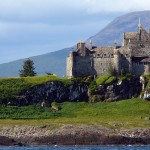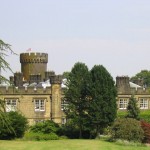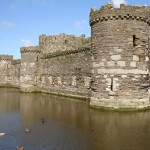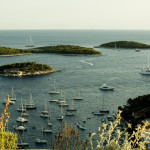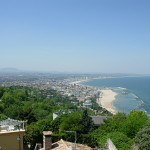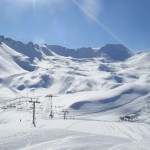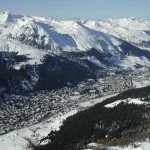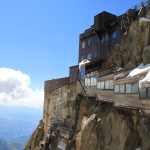Visiting Ireland’s Abandoned Blasket Islands
Off the southwest coast of Ireland, lie a set of islands known as the Blasket Islands. Today, these islands are abandoned, but for centuries a community of hard working people lived here, eking out a living in this isolated environment. Visiting the islands today gives an evocative sense of what life here was like – both the beauty and the hardship.
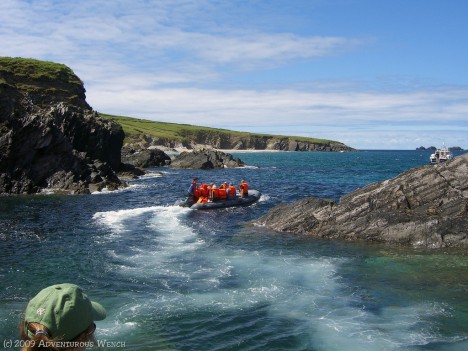
Boat leaving Great Blasket Island by Deanna Keahey
The Blasket Islands are about three miles from the Irish mainland, but they feel a world apart. The people here kept the ways of a simpler time, due to both isolation and lack of money. They never had television or supermarkets. They never had movie theaters or gas stations. The islanders continued to live a simple life until they were forced by the government to abandon their homes, ensuring that the Blaskets would never move into modern times.
It’s never been easy to get to the Blasket Islands. In the old days, people used small, open rowboats called curraghs, to travel out to the island. People had to row back and forth for many reasons – to buy or sell livestock or other goods, to see a doctor or a priest, or even to carry the mail. It’s hard to imagine loading a cow into one of these little rowboats without capsizing it, but they did. Travel to the mainland was difficult in good weather, and dangerous or even impossible in bad weather.
Life on the islands depended largely on the sea. Not only did it determine when they could row to the mainland, but it also provided much of what they needed. Fishing was a mainstay for food, and islanders also gathered seaweed to fertilize the scanty soil on the island for growing crops. A shipwreck could provide an unexpected bounty – everything from timber for building to rare supplies. Wood was scarce on the island, so they harvested peat to make fires.
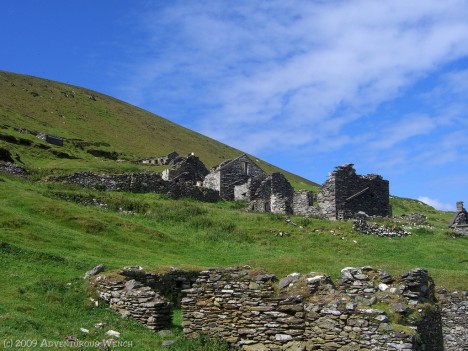
Blasket Islands abandoned village by Deanna Keahey
In the 1800s, there were about 150 people who lived here, but by 1953, the last inhabitants left the islands. The government of Ireland mandated that the last people should abandon their homes on the island, due to the difficulty in ensuring them public services such as health and education. Just a few years earlier, the islanders had an emergency when bad weather cut them off from mainland supplies for several weeks. With a dwindling population there (it was down to 22 people), the government decided it was best to move them ashore.
Today, you can take a ferry to Great Blasket Island, the largest of the group, where the most people lived. The town is now in ruins, but skeletons of many homes still stand. You can wander through the streets of town, or into the ruins of homes. It’s a reminder of how tough life was here, to think of a large family living in one of these small two-room homes. You can see where people launched their curraghs for fishing, the beach where they gathered seaweed, and the hills where the children hunted rabbits.
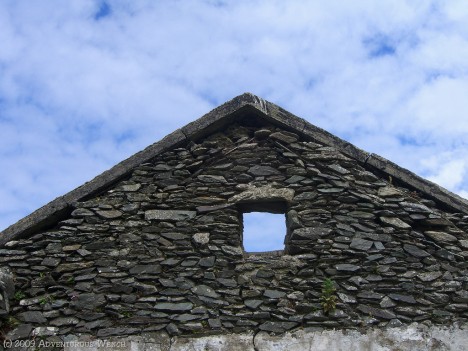
Roofless stone house by Deanna Keahey
You can walk all the way around the island if you want, with great views of the islands and the sea. A walk around the island can be sunny, brisk, or blustery – or all three, on different sides of the island. You can find the remains of a Napoleonic fort at the very top of the island, along with the best views of all.
Dunquin is the closest place on the Irish mainland, and you can catch a ferry from there to Great Blasket Island. Even today, the trip is dependent on weather, and you may find that the boats aren’t running if the sea is up. As you ferry over to Great Blasket Island, just think about rowing yourself across in a small open boat. That will give you a great perspective on life in the Blasket Islands.
Deanna Keahey is a lifelong traveler, who ran an international travel company for years. Today, you’ll find her out traveling, hiking, and exploring as much as possible. Deanna writes about travel products and cool travel ideas at Best Travel Clothes, and you can find her on Facebook, Twitter or Google+






